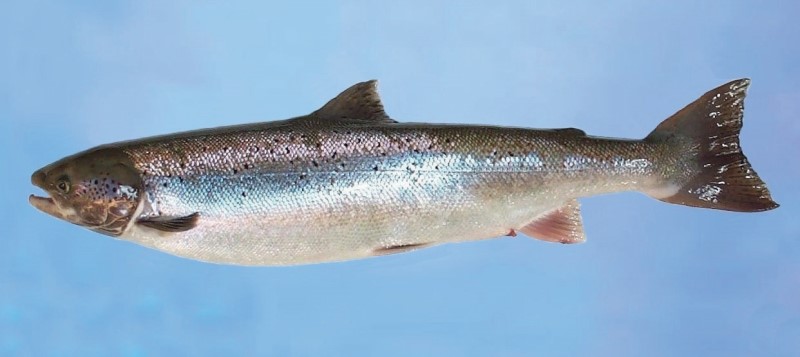Trouts and Salmons (Salmonidae)

Trout belong to a relatively diverse family that is widespread in the Northern Hemisphere and includes graylings and whitefishes. They are characterized by a streamlined shape, small scales and spineless fins. They have a single soft dorsal fin and their pelvic fins are abdominal. Key characteristics for the family are the presence of an adipose fin and a pelvic axillary process (a small flap of tissue at base of pelvic fin).
Five species (and one hybrid, the “tiger trout”) exist in Connecticut. Only the brook trout and Atlantic salmon are native; the rest were introduced as sport fish. Depending on species, trout typically spawn anywhere from October to April. They migrate upstream to riffle areas and nest in hollowed-out areas of gravel called “redds.” The males become brightly-colored and develop a hooked lower jaw (called a “kype”) during the spawning season. Young trout (called “parr”) typically look very different from the adults and possess large, dark blotches on their sides called “parr marks,” which gradually disappear as they mature.
Click on the species' names below to learn more.
Altantic Salmon (Salmo salar) - Native

Brown Trout (Salmo trutta) - Introduced

Rainbow Trout (Oncorhyncus mykiss) - Introduced

Brook Trout (Salvelinus fontinalis) - Native

Tiger Trout (Salmo trutta x Salvelinus fontinalis) - Hybrid

Kokanee (Oncorhyncus nerka) - Introduced

Lake trout (Salvelinus namaycush) exist in some lakes of neighboring Massachusetts and New York. Lake trout require deep, cold, well-oxygenated water to survive. Lake trout populations used to be maintained in a few Connecticut lakes through stocking programs (the State Record of 29 pounds, 13 ounces was taken from Wononscopomuc Lake (Salisbury) in 1918). With the possible exception of a couple of large water-supply reservoirs, Connecticut lakes no longer have sufficient oxygen in deep water during the summer to sustain lake trout.
Lake trout can be distinguished from other trout species by the presence of light spots on a dark background with no red spots present and a deeply-forked tail fin. The adults have a large mouth (jaw extends well beyond posterior margin of eye). The pelvic and anal fins often have a poorly-developed white stripe on the leading edge, but do not have a black stripe. They are typically dark green to gray on the back; lighter grayish, greenish or silvery on the sides; and whitish on the belly. Dorsal fins of parr lack dark markings.
Trout and salmon are not generally suitable for home aquariums. They require a large tank, good-quality water, and some kind of water cooling system (or a tank location that never exceeds 65° F). Otherwise, they can be readily trained to accept pellets.
Text and images adapted from Jacobs, R. P., O'Donnell, E. B., and Connecticut DEEP. (2009). A Pictorial Guide to Freshwater Fishes of Connecticut. Hartford, CT. Available for purchase at the DEEP Store.

